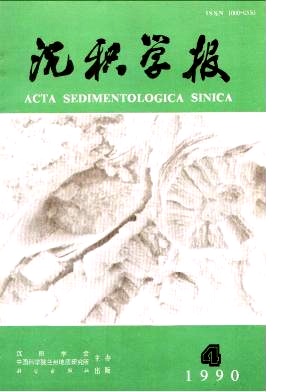ON THE PROVENACE AND SEDIMENTARY WATER-DEPTH OF VOLCANI-CLASTIC ROCK OF UPPER PERMIAN AND TECTONIC ENVIORNMENT, SOUTHERN GUIZHOU AND NORTHERN GUANGXI
- Received Date: 1988-05-06
- Publish Date: 1990-12-10
Abstract: The investigated area consists of a part of Nanpan River Basin located in the conjunction area of Yunna, Guizhou and Guanxi Provinces. A paleogeographic framework of isolated platform alternating with deep troughs occured in the area during Late permian. Volcaniclastics suits are found in deep troughs. Ten dominant lithofacies can be distinguished. Although they had undergone different depositional processes, all of them deposited in deep-water marine enviornment below wave base. Detrital compositions of tuffaceous sandstones of volcani- elastics suits from studied area are similar to detrital frame-work modes of sandstones from magmatic arc provenances and doted in undissected arc plot of the QFL, QmFLt, QpLvLs and QmPR trangular diagrames by W.R.Dickinson. By this and research on lithofacies, it is known that clastic materials derived from volcanic eruption. Volcanism existed widespreadly in the area during Late Permian. Chemical compositions of volcaniclastic rock studied are similar to the basalt of same age in this area, and different from volcanic and volcaniclastic rock in western Guizhou and Central Guangxi. Moreover, major part of the area had been under water besides a few of isolated platforms during Permian. Lithic fragments with quenching-edge and doubly graded sequences are found, no shallow benthos fossils and sediments in the volcaniclastics, no volcaniclastic on isolated platform. These evidences suggest that eruption in investigated area occured in.underwater wich offered volcaniclastic. Major volcaniclastic is fine-size, it is common that subaqueous ash-fallout do not form thin layers but raised with setting sediments, volcaniclastic sequences are widespread, G facies tuffs appear in different local sections and strata, which suggest that subaqueous eruptions be multisourece and frequent. Nanpan River Basin located in the conjunction of Ancient South China Continental Plate, Ancient Tethys Plate and Ancient Pacific Plate during Late Permian, is known as a plate margin enviornment with violent tectonism. Because abundant is volcaniclastic rock from dominantly gravity flow sedimentation, the basalts belong to tholeiite, in the investigated area with a modern marginal basin, the area was tectoniclly located in a marginal basin. The marginal basin was formed by the movement of Ancient Tethys Plate turning northeastward and underthrusing for NW tension faults being great and main passages of the eruptions. And the basin may be influncea by Ancient Pacific Plate northwestward for cale-alkaline volcanism in Central Guangxi and NE faults in the basin. From the studies of sedimentery characteristics, biologic fossils, chemical petrology and pressure compensation level of subaquenous eruption it is concluded that the ancient water-depth of the troughs in this area was most probably between 300-500m, never over 1000m, in Late Permian.
| Citation: | Zhang Fan Fang, Shaoxian. ON THE PROVENACE AND SEDIMENTARY WATER-DEPTH OF VOLCANI-CLASTIC ROCK OF UPPER PERMIAN AND TECTONIC ENVIORNMENT, SOUTHERN GUIZHOU AND NORTHERN GUANGXI[J]. Acta Sedimentologica Sinica, 1990, 8(4): 22-32. |






 DownLoad:
DownLoad: